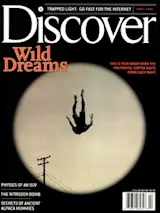I RECENTLY SAW The two African masks above in separate shows on the Yale University campus. The eerie Sowei women's mask from Sierra Leone appeared at the Peabody Museum of Natural History in New Haven, Connecticut, at the same time the stark, gold-spotted mask from the Democratic Republic of the Congo was displayed at the Yale Art Gallery a 10-minute stroll away. After seeing the shows, I couldn't help thinking that the masks could easily have been switched from one museum to the other— as could have the entire exhibitions. What is the distinction, I wondered, between a natural history museum and an art museum? We tend to think of these two institutions as vastly different, but increasingly nowadays they are looking remarkably alike, displaying man-made objects in similar ways and telling similar stories about human culture.
The signs can be seen from coast to coast. When an epochal show ...














